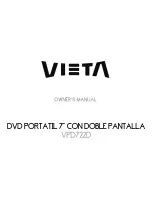
14
Bulletin HY22-3220A/US
Instruction Manual
550 Series Hydraulic Power Units
Operation and Maintenance
Removal from service
There may be hydraulic liquid under
pressure. Do not open unit or break pipe
connections until hydraulic pressure has
been released.
If, for some reason, the power unit must be removed from
service, follow these instructions:
1) Wear protective eye gear.
2) Remove electrical power from the motor and solenoid valve
(if applicable).
3) Mechanically hold/block the actuator load to prevent its
movement once pressure is relieved in the fluid conductors.
4) Only after the load is mechanically held in place, put a
rag around the A or B port fitting and loosen the port
connection. The rag will absorb an oil leakage as any locked
pressure is relieved. Then put a rag around the other port
connection and loosen the port connection.
5) Immediately cap the fluid conductor ends and the power unit
ports to prevent the introduction of contaminants until the
power unit is reconnected.
6) When reinstalling the power unit, follow all the procedures
and startup instructions on page 10.
Operation
Suitable lighting requirements for operation of this unit are the
responsibility of installing manufacturer.
The 550 Series Power Units are assembled and tested
according to the specific model codes ordered. See page 15 for
performance graphs which provide the expected flows of the
available pump sizes at 1725 RPM and 3450 RPM at a variety of
pressures.
Maintenance
Maintenance should only be conducted when units are
disconnected from the power supply, depressurized and
removed from service.
Reservoirs
-Maintain oil level at all times. The oil should be
checked after the first 100 hours and verified that the class of
oil meets the requirements of the pump being used. Change the
oil every 1000 to 2000 hours depending on the application and
operation environment.
Cylindrical Steel and Composite Reservoirs
To remove the fluid from the cylindrical steel and composite
reservoirs, it is recommended to remove the filler cap and use
a siphon to remove the oil. Dispose of, or recycle the used
fluid according to local regulations. Once the fluid is removed,
an examination of the suction strainer is suggested. To access
the strainer, the reservoir must be removed. To remove the
cylindrical steel and composite plastic reservoirs, loosen and
remove the four screws holding the reservoir flange to the
power unit adapter. These screws require an 8 mm (5/16 in)
wrench or socket.
In horizontal applications, place absorbent paper or towels
under the reservoir flange area to catch any remaining fluid as
the reservoir is removed from the power unit adapter. Dispose
of any oil-soaked materials according to local regulations.
19 liter (5 gallon) reservoir
To remove the fluid from this reservoir, there are two drain
plugs provided, one on each end. These plugs require an
adjustable wrench or 15 mm (9/16 in) open end wrench to
remove (and replace). Another option is to remove the electric
motor and adapter assembly from the reservoir by removing
the four each 5/16 in hex head screws holding the adapter to
the reservoir cover. Use a siphon to remove the fluid from this
reservoir. Dispose of, or recycle the used fluid according to
local regulations. This method will allow for examination of the
suction strainer.
Suction strainer – It is recommended that at the same intervals
at which the reservoir fluid is changed, the suction strainer
be examined for any conditions restricting the free flow of
fluid through it. If the strainer appears restricted at all, it is
recommended that the strainer be replaced. The strainer is
Oildyne part number 410542. The strainer is hand threaded onto
a plastic elbow. Turn the strainer counter-clockwise to remove
then install a new strainer by turning the strainer clockwise onto
the elbow threads until it is tight against the elbow hex.
Cylindrical Steel and Composite Reservoirs
Once the suction strainer has been installed, replace the
reservoir using the same four hex head screws. Ensure the
filler port on the reservoir is oriented to face UP. Torque the
Parker Hannifin
HPS Division
New Hope, MN 55428 USA






































